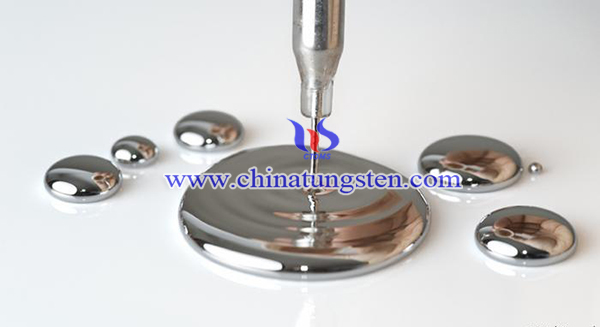Preparation of Ce-W/Ti Catalyst with APT for Mercury Oxidation Application
- Details
- Category: Tungsten Information
- Published on Wednesday, 28 April 2021 18:34
Mercury, serving as a persistent, toxic, bioaccumulative heavy metal, can be transported globally in the atmosphere, therefore mercury pollution is an important public health and environmental concern. Annual mercury emissions of China increased from 147 t in 1978 to 530 t in 2014, in which the contribution rate of coal field was 34%–50%.
China advocates the synergistic mercury removal technologies in the coal-fired power plants and coal-fired boilers. The mercury emitted from coal combustion existed in form of three forms: particle-bound mercury (HgP), oxidized mercury (Hg2+) and elemental mercury (Hg0). The Hg2+ and HgP can be easily captured by wet flue gas desulfurization (WFGD) system and dust control devices, respectively. However, Hg0 is difficult to be removed by these techniques because of its volatility and insolubility.

The Ce-based catalyst, Ce-W/Ti catalyst had been had been synthesized for mercury oxidation application. Ammonium paratungstate (APT) had been used as tungsten source. The Ce-W/Ti catalyst was prepared by the wet impregnation method as following procedures:
Commercial TiO2 Degussa P25 was used as the precursor. CeO2(5%)–WO3(9%)/TiO2 nanocomposite was prepared by dispersal of a certain mass of TiO2 powder into 200 mL Ce(NO3)3·6H2O (cerium nitrate hexahydrate) and 5(NH4)2O·12WO3·5H2O (ammonium paratungstate, APT) solution to obtain CeO2(5)–WO3(9)/TiO2 slurry. The slurries were then stirred for 24 h, heated at 110 °C for 12 h, and calcinated at 500 °C for 4 h in air. The catalyst was ground and sieved to 40–60 mesh for activity evaluation and denoted as CeO2(5)–WO3(9)/TiO2(The numbers in brackets represented the mass percentage).
The BET surface area of the produced catalysts was 46.78 m2·g−1 and the average pore diameter was 34.76 nm. The mercury oxidation efficiency of the catalyst could reach 71.9%. Considering the actual conditions of coal incineration, the flue gases contain 6% O2, 500–3000 ppm SO2, 10 ppm HCl, 100 ppm NO and balance gas N2. Thus HCl and NO had been added to investigate the mercury oxidation efficiency.

In summary, the catalyst CeO2 (5)–WO3(9)/TiO2 showed excellent mercury oxidation property. The NO and HCl not only transformed the adsorbed Hg on the catalyst into gaseous Hg2+, but also improved the Roxy of the catalyst via new active sites formation. The NO and HCl addition could keep the mercury oxidation efficiency over 91.5% with the presence of 500–3000 ppm SO2 and increase the SO2 resistance of the catalyst. Adding NO forms the NO2 and nitrate serving as active sites of the mercury oxidation.
- APT Manufacturer & Supplier, Chinatungsten Online: ammonium-paratungstate.com
- Tungsten News & Prices of China Tungsten Industry Association: www.ctia.com.cn
- Molybdenum News & Price: news.molybdenum.com.cn
- Tel.: 86 592 5129696; Fax: 86 592 5129797; Email: sales@chinatungsten.com



 sales@chinatungsten.com
sales@chinatungsten.com